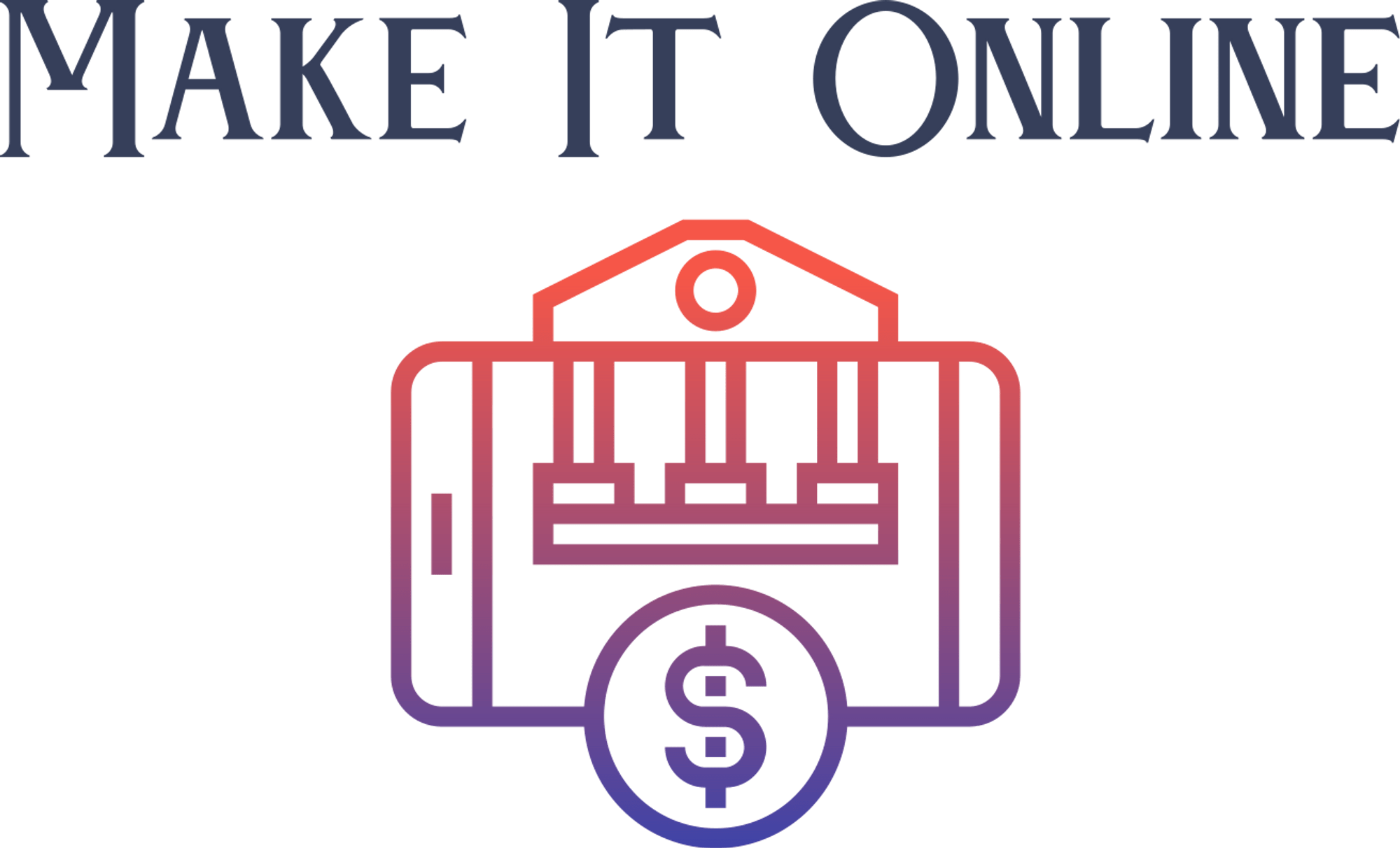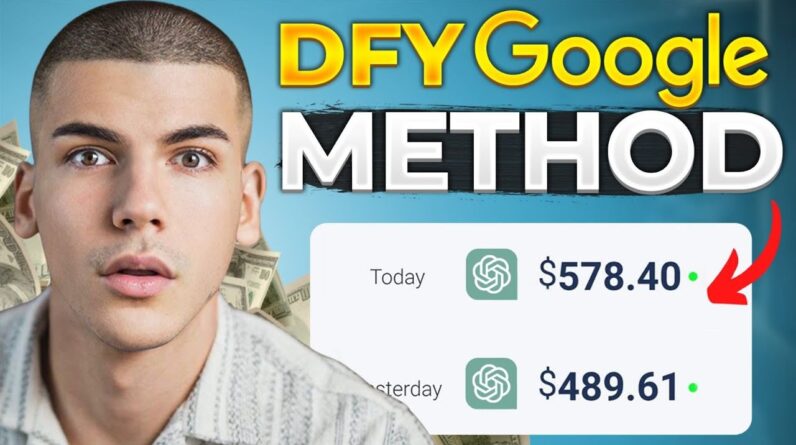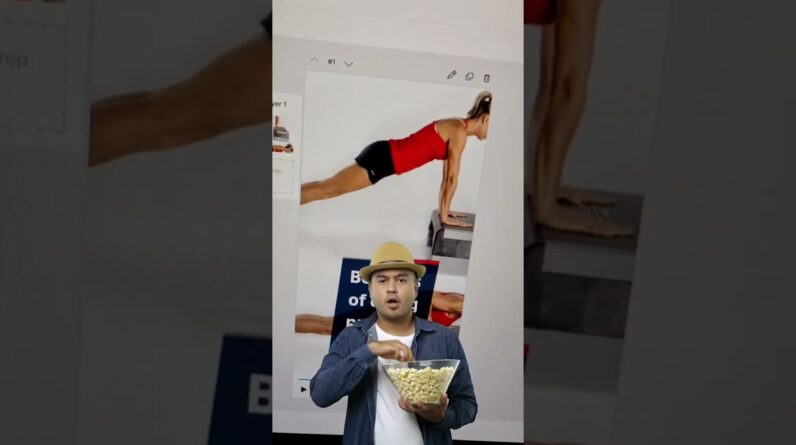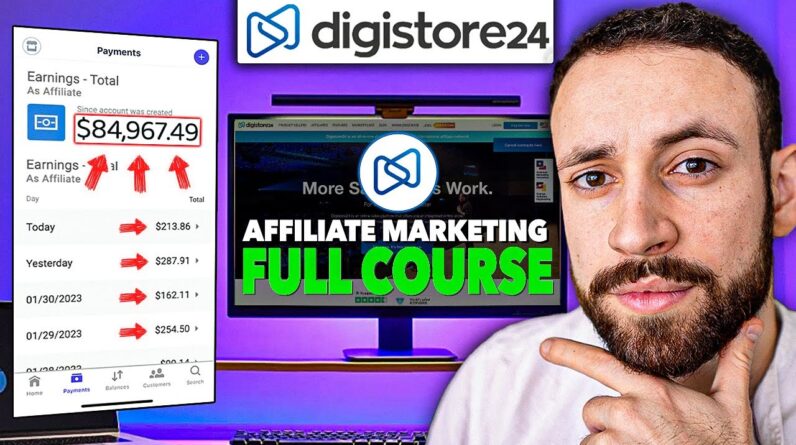MIRIAM: This video is a part
of the Google Digital Marketing and E-commerce
Certificate, providing you with job-ready skills
to start or advance your career in digital
marketing and e-commerce. Get access to hands-on
activities, quizzes, discussion forums, job search
help, and more on Coursera. And you can earn your
official certificate. Visit
grow.google/digitalmarketing to enroll in the full
learning experience today. [MUSIC PLAYING] MIKE: In 2020, global
changes in the world forced people to
stay in their homes. With many people not being
able to shop in person, the demand for online
sales rose significantly. A report in 2021 found that
the number of digital buyers reached 2.14 billion. That is just over one quarter
of the world's population. This large increase led to
a growth in e-commerce jobs for candidates like you.
Many of you who decided
to take this program did so with the
intention of obtaining one of those new jobs. Now that you've learned a
vast amount of knowledge about digital marketing
and e-commerce, it's time to get a job. In this section of
the course, I'll help you prepare for the
job interview process. We'll complete a
project-based scenario. Then we'll explore the job
interview process, including how to prepare a portfolio
for a job application and how to create a resume. Then we'll move on to prepare
for the interview process and learn what you can
expect during the interview. To wrap up, we'll discuss
common interview questions. We're nearing the
end of the program. Let's finish strong. [MUSIC PLAYING] Are you ready for a challenge? Up until this point,
I've been guiding you through videos that have
introduced or tested you on new concepts related to
the best e-commerce business practices.
Now it's time for you to put
those skills to the test. In this section of
the course, you'll complete a
scenario-based project. This section is
meant to prepare you for a future in e-commerce
and digital marketing by giving you a glimpse of
the duties or tasks you might encounter in the workplace. Once you're finished,
this project can also be used to
demonstrate your knowledge to potential employers. Move on to the next
course items to learn more about the expectations
for this project. [MUSIC PLAYING] ERIKA: Hi, again. How did you enjoy creating
your scenario project? I hope that it gave you
insight into the tasks you'll face in the digital marketing
and e-commerce industry. If you've been
taking the courses of this program in order,
you may remember me from an earlier video.
If this is our
first time meeting, allow me to introduce myself. I'm Erika, a people
consultant at Google, also known elsewhere as
an HR business partner. My job involves helping
managers, leaders, and Google employees
grow in their roles to help our organization
reach their goals. Over the next few videos,
I'll be taking over for Mike to guide you through some
job readiness skills content. Let's get started. It's time to explore
e-commerce portfolios and how you can use
them in the future to impress your interviewers. A portfolio is an
edited collection of an individual's best projects
intended to showcase work experience, style, or methods. You may be able
to visualize what a portfolio for a photographer,
painter, or fashion designer may be. If the portfolio
belongs to an artist, it might include
paintings or photographs.
For digital marketers and
e-commerce professionals, this might be a
little different. For this field,
portfolios should visually communicate assets
and items you've created that relate
to your experience with digital marketing
and e-commerce. These items can include ads,
social media posts, campaigns, videos, email marketing
examples, and much more. Portfolios can
come in many forms, including websites,
slideshow presentations, or even printed documents. Let's review those. First, there are
portfolio websites. These allow employers
to access your work through a simple website URL. Portfolio websites can be
created using website builders like Google Sites or Wix. Here is an example of
what this might look like. In this mock portfolio
website, the e-commerce analyst displays their work in a way
that is visually interesting. Visitors to the
website can select links to move from one
project to the next. While these websites create a
great professional appearance, they may require advanced
knowledge or more time to cultivate. An alternative is
slideshow presentations. Like portfolio websites,
slideshow presentations allow employers to
access your work online.
However, they require less
time to create than websites. These can be created using
presentation software like Microsoft PowerPoint
or Google Slides. For example, using the same
fictional e-commerce analyst as before, here is
their work displayed on a slides presentation. Just like with a
portfolio website, the link for the
presentation can be shared. And finally, there
are printed documents. Printed documents can be
created using an application like Google Docs, Canva,
or Adobe InDesign. The benefit to using
printed documents is that they are
portable, so they can be taken with you to interviews.
However, they can't be submitted
to online resume portals, which is a huge disadvantage in a
digitally-connected industry. In a later reading,
you'll explore how to create a
professional portfolio using one of these methods. Once you decide on the portfolio
type that works best for you, it's important
for your portfolio to convey who you are
and the types of jobs you're interested in.
The way you position your
previous work in your portfolio will help communicate your
identity as a digital marketer or e-commerce specialist. It will also help future
employers evaluate you as a potential hire. Here are some tips
to keep in mind as you create your portfolio. First, organize your projects. Organization is
important, as it speaks to which projects you
are most confident about. Put projects that best
demonstrate your skills at the beginning
of your portfolio. For example, if you
are put in charge of creating a weekly
newsletter for the company you intern for, you
could add example images of the newsletters
to your portfolio. With that in mind,
be sure to add any projects you created
in the certificate program to your portfolio.
Next, summarize each
project, including its goals and outcomes. For our newsletter
example, you may add that the intended
goal of the newsletter was to inform customers
about new products available on the
stores websites, and the outcome was that the
emails led to 80 new website visits a week. Next, highlight any
transferable skills. For each project
that you add, you want to tie it back
to how it relates to the digital marketing
or e-commerce industry. In our newsletter
example, you can mention that the skills
learned from this project relates to the field of
email marketing and customer retention. Finally, demonstrate a
willingness to learn. This can come across in your
reflections on your own work. For example, instead
of only highlighting everything you did
well, it can be useful to identify
mistakes you made during the process and things
you'd do differently next time.
The goal of your portfolio
as an entry-level employee is to show potential. So don't stress if it
isn't perfect just yet. You can always go back and
add more to your portfolio as you gain more skills. [MUSIC PLAYING] One of the first steps
to applying for a job is creating or
updating a resume. In this video,
we'll explore what job resumes for digital
marketing and e-commerce should include to make you
a competitive candidate among fellow job applicants. First, let's define
what a resume is. A resume is a document
created and used by a person to present
their background, skills, and accomplishments. They can be used for
a variety of reasons, but most often resumes are
used to secure employment.
Generally, they are between
one to two pages long. You may find that a resume is
sometimes called a Curriculum Vitae or a CV for short. A CV is a document that
presents a full history of an applicant's full
academic credentials and professional experience. While oftentimes
used interchangeably, a resume is shorter and
presents a more concise picture of your skills
and qualifications for a specific position. So the length tends to
be shorter and dictated by years of experience.
By comparison, resumes are
different from portfolios because instead of
showing an employer what you did was supporting material,
graphics, and examples, resumes tell employers
what you did using words. Resumes can be
created on your own using word processing
applications like Google Docs or Microsoft Word. Many people,
however, find that it is helpful to start with
the resume template. Google Docs, Microsoft Word,
and online platforms like Canva offer a variety of
templates to choose from. Templates save time
and help your documents look professional. While these templates
may look different, there are usually
four sections– a personal information section
that lists your name, email, address, and phone number;
an experience section that lists your work history; an
education and training section that explains your
education background; and a skills section that
details what specific skills you have. If you are using a
template, you should replace all of
the prefilled text with your information
and qualifications. In the digital marketing
and e-commerce field, hiring managers are searching
for candidates with related experience and skills.
You should include experiences
and skills like the ones that you've acquired or
developed in this program. These include but
are not limited to creating email campaigns,
knowledge of Google Ads, SEO strategies, and
building shopping campaigns. This is the perfect
time to reflect on what you enjoyed and did
well during this program. You'll want to spend more
time developing these skills. You can include skills that you
didn't obtain in this program like learning an
additional language or your cultural fluencies. If you don't have
much experience in the digital marketing or
e-commerce space, that's OK. Be sure to also include any
positions that have skills that can transfer to a new field. This is a sample resume
for an e-commerce position that has all of the
proper sections completed. In the Experience section,
it lists specific job roles and the actions that this
candidate performed while in them. Coming up, you'll
learn more about how to prepare your
application materials before applying to jobs.
[MUSIC PLAYING] With the digital marketing
and e-commerce market constantly evolving, there are
a variety of different roles you may apply for in the future. While there isn't
any one specific job process for these
many roles, there are some similarities when
it comes to interviewing. First is finding available
jobs in online listings. With the development of
global internet accessibility over the last few
decades, many job seekers turn to the internet to
find roles that suit them.
You may find luck
on job board sites like LinkedIn, Indeed,
or Google Jobs. These sites allow companies
to post job descriptions for candidates like you. This is an opportunity
to help you understand what you can bring to the role. Before you begin, be
sure to write down what you are looking for in a job. Maybe it's a certain salary
range or a specific daily task you'd like to complete. This way you can
filter jobs that don't fit your idea of the
job you'd like to have. Companies also
have recruiters who are tasked with
finding candidates to fill their job needs.
If they believe that you fit
their job qualifications, they will likely
reach out to you on a professional
website like LinkedIn and encourage you to fill out an
application for their position. So be sure to keep your
information up-to-date. You can add this
program to your list of experience or certificates. Hopefully, submitting
an application leads to a job interview. However, it is common to
submit many job applications and not hear back
from any of them. Sometimes it takes
dozens of applications to get even one interview. Don't be discouraged
if this happens to you. This is common, and
you will get better at the process of applying
each time you try. Continue applying to as
many positions as you find and try not to get too attached
to a particular position.
Keep an open mind. Eventually, you'll find
the right position. Once you get an
interview, you'll want to know what's coming. How the interview
process unfolds will be dependent
on the employer. For smaller companies, there may
only be one or two interviews. For larger organizations,
however, there may be many rounds of
interviews ahead of you. In most cases, the
first interview, called a preliminary interview,
is a fast-paced meeting conducted over a phone
call or video chat. The purpose of this
interview is for someone at the company like a recruiter
to gather basic information from you like your name
and to review your resume to briefly go over your
skills and experience. While preliminary interviews
are usually casual, make sure that you put
your best self forward. That is make sure
you present yourself as a viable candidate
for the job.
The second interview is usually
called a follow-up interview. This is an in-depth
meeting that will likely feature members of the team
that you will be working with. This will be your time to
make a great impression. In a later video, we will go
into more detail about how you'll accomplish this. For now, remember that
follow-up interviews always require some preparation. Once you complete the
interview process, you'll receive a response
in the following weeks. If the news is good,
congratulations on your new role. If the process ends in
rejection, don't worry. I encourage you to take
the time to reflect on what you can improve
on in your next interview. However, there are
often untold reasons why you may not
have received a job offer that has nothing to do
with you or your interview. So don't get discouraged. Personally, I like to
believe that a no is just one step closer to a yes.

Just remember that there are
a vast number of opportunities out there for you to apply to. The steps to getting a job
offer isn't a perfect science, but keep a positive
attitude as you apply, and soon you'll find the
position that is right for you. [MUSIC PLAYING] So you've responded
to a job posting, and they have reached
out to you and want to set up an interview. What's next? One of the most
important things you can do to prepare
for an interview is pre-interview research. You can conduct pre-interview
research before and after you apply. It can be very tempting
to go into an interview without completing any
pre-interview research. However, it is important
for determining if the company is aligned with
your own interests and goals. The company you apply to
could have different values than that of your own.
Another benefit
is that it allows you to learn more about a
company's positive or negative reputation. Reading what others have
to say about a company is a great way to get
an idea of what it's like to work for that company. This allows you to view
achievements or shortcomings a company may have. If the company you
are interested in isn't discussed
positively, more research can illustrate how
the company chose to respond to the situation. And finally,
pre-interview research can help you during the
application and interview process. Reference the
information you learn during your pre-interview
research in your cover letter, resume, and interview. It will show that you
prepared for the interview, and it's a great way to let
the employer know that you are serious about the role. Now that we've
covered some benefits, let's explore the next
steps of completing pre-interview research. The first step is to explore the
requirements and expectations of the job you're applying for.
To start, read and explore the
requirements of the position before the interview. You can do this by reading
the job description in detail, or you can reach out to
someone who has the job or has worked in a similar role. If you don't know
someone personally, consider reaching out on
a professional networking site like LinkedIn. Speaking with someone who has
the job you're applying for can help you get a sense of
the background, knowledge, and skills that you'll need
to succeed in that job.
Just remember to use your
discretion on who you contact and how you talk to them. Be sure to keep your messages
concise and professional. The second step in the
pre-interview research process is to gather knowledge about the
company you're applying to and, if applicable, its
products or services. To find specific information,
explore the company's website to learn about their values,
their achievements, and company culture. You can also search for
recent news articles related to the company. This step also
includes exploring reviews on the company from
current and former employees by visiting sites like
Glassdoor or LinkedIn. Be aware not all information
like this is factual and could be biased based on
the poster's personal experience with the company.
This information should
be taken cautiously. If you apply and
schedule an interview, the third step is to determine
common interview questions that may be asked. Use a search engine to ask what
are common interview questions for an e-commerce position. Compare information
from different sources until you get a general idea of
the most common questions asked in an entry-level
e-commerce interview. You can also use other sources
like reviews of the job interview process on sites like
LinkedIn or Indeed in order to gather additional
information about questions that may be asked. After you schedule
an interview, you can use these questions
to help you prepare. You may even want to ask a
friend or family member to help you practice for your
interview by asking your questions from the
list, or you can take time to practice your
interview questions and answer in front of
a mirror so that you can anticipate how you will
come across to your interviewer.
Whether you are deciding
on applying for a position or have landed an
interview, this information plays a major role in
the application process. Coming up, we'll
explore more ways to get you interview-ready. [MUSIC PLAYING] Every step in the
interview process is an opportunity
to build rapport, meaning a friendly,
empathetic relationship that makes communication
and connection easy. Building, strong,
memorable connections with hiring managers
is much more impactful than just submitting an
application and moving on.
Let's explore some tips
for building rapport with your interviewer. Before your interview
takes place, it can be helpful to understand
who you will be meeting with and their background. To get to know your
interviewers better, do a bit of research on them– nothing extensive or
invasive, just enough to know who the person is and
their professional experience. Don't stray into
their personal life by looking into
their social media pages or other nonwork-related
online activities. You can find this information
on the company website and the interviewer's
professional website or LinkedIn profile. Smaller companies often
have an About page on their company website where
they'll list team members. The company site
can help you learn more about each interviewer's
role at the company. Once you are in the interview,
remember to be yourself. Every person you meet
during an interview might be a future
colleague that you'll have a long-term professional
relationship with. In the same way you want to
know more about who they are, they want to know
more about you.
That means actively sharing
things about yourself to build a
relationship while also being professional
and respectful of their personal boundaries. Next, relax. If you find yourself
nervous during an interview, remember you're not alone. Many people with
years of experience still get nervous during
the interview process. If this happens, remember
that interviewers are interested in your
knowledge, skills, and qualifications
to advance you to this point in the process. So you've already proven that
you're a great candidate. To help you relax, take a few
breaths before your interview begins and practice answering
questions before your interview takes place. Fourth, ask questions. Remembering that your
interview is a two-way street is important, as it creates
more opportunities for you to learn more about the person
you're communicating with, the job you're interviewing
for, and the company you're considering joining. In addition to asking
questions about the company culture and achievements,
ask the interviewer questions about what they find
rewarding about their job or what they enjoy most about
the direction the company is going in. The answers that
they provide will lead to more insight about the
people you'd be working with and how they feel
about the organization.
Asking thoughtful
questions also demonstrates that you're interested in
working for the organization and that you're curious about
how to make things better. And finally, learn about
the culture of the company. While it's important to
follow certain social norms, you will still need to prepare
so you know what to expect. Understanding the cultural
norms of the company is key so that you can
either be sure to match them as you interview or specifically
share how you may be different. For instance, understanding
how formally people dress in the office could
help you decide what to wear for your interview. And it will also help
you present yourself in a way that feels both
respectful to the company and authentic to yourself. At some companies, wearing
a suit to the interview might not be appropriate.
And at other companies, wearing
a suit might be a requirement. When in doubt,
ask the recruiter. But it's usually better
to be dressed more formally than casual. In addition, use appropriate
professional language at every point in your job search,
even if they don't. You want to build a rapport,
but being too casual in your conversations
could cause interviewers to misunderstand
your ability to work in a professional environment. This could be the one thing that
prevents them from recommending you for the position. Great. Now you know more about
the people you're meeting and how to build a
rapport with them. Move on to learn more about
the interview process. [MUSIC PLAYING] In any good story,
there's usually a strong beginning that
sets up the narrative, an exciting middle that
presents obstacles, and a resolution that
wraps everything up. But imagine if the fairy
tale "Cinderella," which is an ancient Egyptian story
popularized around the world by Walt Disney, was told
with major parts missing. Once upon a time, there was
a girl named Cinderella. Something happened
with a glass slipper, and she lived
happily ever after.
You'd be very confused and
have a lot of questions. The same is true with
answering interview questions. During the interview you
may be asked questions like, can you tell me
about a time when you solve the problem related to
buying and selling goods online or what part of the
e-commerce industry do you enjoy doing
the most and why. To answer these questions
as well as possible, it's best to use a proper
structure that provides the right amount of detail. A helpful strategy for
answering interview questions is to use the STAR method. STAR stands for
Situation, Task, Action, Result. Try to keep your
responses short and focused on your main point. One or two sentences is
usually enough for each part of the STAR method. For example, if an applicant
with office management experience was asked,
describe a project that makes you proud,
using the STAR method, they'll want to structure
their answer in a way that's relevant and easy to follow.
They'll start with a situation
that relates to that question. For example, in my last
job as an office manager, the small business
I worked for was growing fast and needed to
move to a bigger office space. Next, they should relate
that situation to the task that they were assigned. For example, they
might say, I was asked to help organize the
move to a new office space so that it would be
a smooth transition. My goal was to make sure there
was very little disruption to the company's day-to-day
work throughout the process. Then they'll share
the action that they took to complete that task. For example, I made
a list of everything we would need for the
packing and moving process and created a timeline for the
project to ensure everything got done at the right time
and in the right order.
I also kept the company
owner and employees updated on how things were progressing. Finally, they'll
share the result that was achieved at the
end of that situation. For example, the
move went smoothly and the employees were
able to focus on their work with only a few
hours of disruption to get settled into
the new office. Plus, the company owner
was very happy not to have to deal
with the logistics of the move on their own. While answering questions
using the STAR method, be sure to give the interviewers
a sense of who you are and why you're there. Be well prepared
with specific points about how your unique
background and experiences fit with the position. As you practice more
and more, you'll get better at responding
to all types of questions. [MUSIC PLAYING] Have you ever been asked
the question, who are you? At first, it can seem like a
pretty simple question, right? For example, I could simply
answer by saying I'm Erika.
To go one step further, I
could even add my job title, and the company I work for. Now instead of simply
saying, hi, I'm Erika, I would say, hi, I'm Erika, a
people consultant at Google. But even saying that isn't a
larger reflection of who I am. This is where elevator
pitches can help. An elevator pitch is a
short, memorable description that explains a concept in
an easy to understand way. The idea is that you
only have the attention of your audience for the
duration of an elevator ride. So you have to be able to
communicate the concept quickly and succinctly. Elevator pitches
are particularly helpful for introducing
yourself to career and business connections like at networking
events or in the office. You may even notice that
your elevator pitch will come in handy for other types
of situations like meeting new friends or new colleagues.
For your purposes,
the elevator pitch will focus on who you are,
your experience, and what makes you unique as an
entry-level digital marketing or e-commerce specialist. Let's explore the different
parts to an elevator pitch by using me as an example. Since I work in
human resources, I'll be pretending that I'm applying
to an entry-level position in my field. Let's get started. First there's the intro. It details who you are and your
current role and a little bit about your professional
background. Personally, I would
say, I'm Erika, and I'm a people
consultant at Google with more than 10 years in
the corporate environment. My current role
is similar to that of a human resources business
partner at other companies.
My job involves helping
managers, leaders, and Google employees
grow in their roles to help our organization
reach their goals. Next is the most applicable
part of my background that I bring to a
job opportunity. For example, in my
time in this field, I've worked with employees
and leaders at all levels to help them
achieve their career goals through professional
development and coaching. After that, I add
in what makes me excited to be working
in my industry and showcase my passion for
the work that I've done. For example, I love diving
deep with employees and leaders to understand their
goals, passions, and what keeps them engaged
and excited at work. In collaboration,
I help them map out career paths and
development areas, which can help them
achieve their goals and support their
teams, organizations, and the overall business. Coming up, you'll create
your own elevator pitch. If done correctly,
it will help you be more prepared when
an interviewer asks you to tell them about yourself.
Once you've perfected it,
be sure to practice it every now and again. Also be sure to
update it once you achieve more accomplishments. Good luck. MIRIAM: Congratulations
on finishing this video from the Google digital
marketing and e-commerce certificate. Access the full experience on
Coursera, including job search help, and start earning
the official certificate by clicking the icon or the
link in the description. Watch the next video in the
course by clicking here, and subscribe to our
channel for more lessons from Google Career Certificate..







